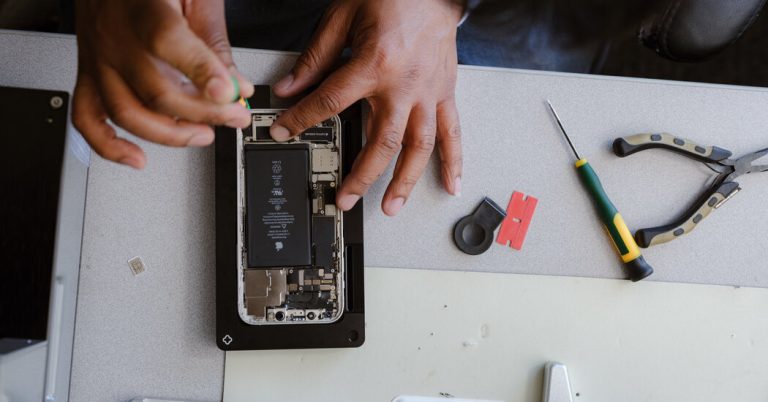Apple announced Thursday that it will loosen limits on repairing newer iPhones with used parts such as screens, batteries and cameras, reversing its past practice of using software to encourage people to work with new and more expensive Apple-approved parts.
The change comes weeks after Oregon passed a law banning Apple’s practice of linking components to software, known as “component pairing.” Similar bills are being considered in Colorado and more than a dozen other states. Apple had opposed the Oregon law before its passage, saying customers could become vulnerable to security risks if Apple were required to allow lower-priced components made by third-party vendors.
In the past, if an iPhone owner broke a component — a screen, for example — and installed a genuine, used Apple screen bought from a source like eBay, the replacement screen wouldn’t work properly because its serial number didn’t match. in Apple’s database. The only way to install a fully functional part was if it was purchased from Apple, who had the tools to match the part to the phone.
Apple’s new policy will remove these restrictions for the iPhone 15, which was released last year. Apple said the change will begin this fall and will apply to genuine Apple parts, meaning those made by iPhone suppliers. When a genuine part is installed, the phone will work with it automatically, without requiring a technician to provide a serial number to Apple. The replacement will work perfectly with the iPhone.
The reversal comes about five months after The New York Times published an analysis of Apple’s increasing restrictions on iPhone repairs, which has driven up costs for consumers.
In a press release announcing the change, Apple said only that the change would lift component pairing restrictions on Apple-approved displays, batteries and other components — not those made by third-party vendors. These parts are usually less expensive and could save customers money on repairs. It costs about $300 to replace a broken screen at an Apple Store, about $100 more than a job done by an independent store using a third-party screen.
An Apple spokesman said people could install third-party parts, but that iPhones would continue to use software to notify them when this was done because the company considered it important for customer safety and security. He pointed to an Apple-sponsored study that showed the majority of third-party smartphone batteries had failed safety tests and that some had caused fires.
Nathan Proctor, who lobbied states for repair legislation on behalf of US PIRG, a nonprofit organization funded largely by small donors, said the move was a small step in the right direction. It never made technical sense for Apple to place restrictions on installing genuine Apple parts for repairs, he said.
“It has always been an absurd and ridiculous practice,” Mr Proctor said.
Starting in January, the Oregon law requires Apple and others to begin allowing customers to use any part they want in repairs — even those not approved by the original smartphone manufacturer. Apple will face a penalty of $1,000 a day for non-compliance with the law from 2027.
When the Oregon bill passed, Apple said it would support the repair legislation, but added that “the bill does not provide the consumer protections Oregonians deserve.”




